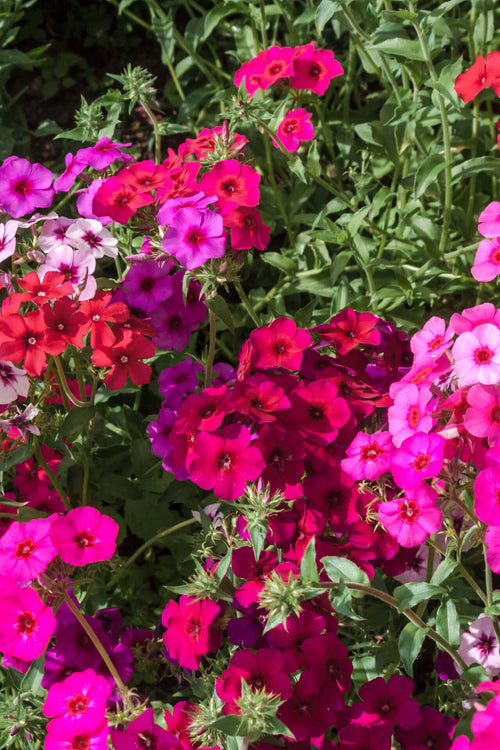Enhance Your Garden with 10 Beautiful and Edible Landscape Flowers
When envisioning a picturesque garden, it's not uncommon to conjure images of vibrant flowers adorning the landscape with their captivating colors and fragrances. But why limit your garden's aesthetic appeal to visual and olfactory senses?
Integrating edible landscape flowers into your garden design can elevate its allure and offer a delightful culinary experience. In this article, we'll explore ten edible landscape flowers that enhance your garden's visual aesthetics and add a delectable twist to your culinary endeavors.
Nasturtium (Tropaeolum majus)
Nasturtiums are a versatile addition to any garden. Their vibrant orange, yellow, and red blossoms create a stunning visual display. These flowers have a peppery flavor that can add a zesty kick to salads, sandwiches, and even garnishes for main dishes. The leaves and flowers are edible, making nasturtiums a delightful and decorative addition to your garden.
Calendula (Calendula officinalis)
Calendula, also known as pot marigold, boasts beautiful golden and orange petals. Beyond its ornamental charm, calendula petals often add color and a subtle saffron-like flavor to soups, rice dishes, and baked goods. Additionally, calendula petals are renowned for their potential health benefits and can be infused to create soothing herbal teas.
Lavender (Lavandula spp.)
Lavender's aromatic blooms and soothing fragrance are well-known, but these flowers are also edible and can be incorporated into various culinary creations. Lavender lends a unique floral and slightly sweet essence to dishes like desserts, salad dressings, and cocktails. Using lavender sparingly is essential, as its flavor can be overpowering when used excessively.
Daylily (Hemerocallis spp.)
Daylilies offer a splash of color with their striking trumpet-shaped flowers. These flowers have a mild, slightly sweet flavor reminiscent of a blend of lettuce and asparagus. They can be used in salads, stir-fries, or as a garnish, adding visual appeal and a subtle taste to your dishes.
Chive Blossoms (Allium schoenoprasum)
Chive blossoms are the flowering heads of the chive plant. Their lavender-hued petals are visually appealing and carry the same oniony flavor as chive leaves. These blossoms can be sprinkled over dishes to provide a mild onion kick or infuse oils and vinegar, imparting a delicate onion essence.
Borage (Borago officinalis)
Borage is a showstopper in any garden with its brilliant blue star-shaped flowers. The flowers have a mild cucumber taste, making them a refreshing addition to salads, drinks, and even frozen in ice cubes for summer beverages.
Roses (Rosa spp.)
Roses also have culinary uses. Rose petals are edible and can infuse syrups, jams, jellies, and desserts with a delicate floral flavor. Using petals that haven't been treated with chemicals and are specifically grown for culinary purposes is essential.
Violas (Viola spp.)
Violas, with their petite and colorful blossoms, are charming and delectable. These flowers have a mild, slightly aromatic taste and can be used in salads, desserts, and cocktails. Violas are also suitable for candying and use as cake decorations.
Dianthus (Dianthus spp.)
Also known as "pinks," dianthus flowers come in various shades and possess a subtle clove-like flavor. Their petals can be used to add a touch of sweetness and spice to dishes like salads and desserts. Dianthus flowers are also suitable for making floral syrups used in beverages or drizzled-over pancakes.
Squash Blossoms (Cucurbita spp.)
As the name suggests, squash blossoms are the flowers of various squash plants. These blossoms are delicate and have a slightly sweet, vegetal flavor. They can be stuffed with cheese, herbs, or other fillings and baked or fried. Adding squash blossoms to your garden provides an edible treat and encourages healthy pollination for squash plants.
Incorporating edible landscape flowers into your garden doesn't just create a feast for the eyes; it tantalizes your taste buds, too
With their diverse flavors and visual appeal, these ten flowers can transform your garden into a multisensory experience. From the zesty kick of nasturtiums to the delicate sweetness of rose petals, each flower offers a unique culinary adventure.
So, whether you're an avid gardener or a food enthusiast, consider adding these edible flowers to your landscape and elevate your garden's aesthetics and dining table's flavors. Incorporating edible landscape flowers into your garden adds a visually stunning element to your outdoor space and introduces a delightful array of flavors and textures to your culinary endeavors.
This innovative approach to gardening merges aesthetics with practicality, transforming your garden into a multi-functional oasis that engages all the senses.
Edible flowers offer a unique opportunity to elevate your garden's visual appeal and gastronomic potential
Delicate blossoms such as nasturtiums, calendula, and pansies bring vibrant hues to your landscape, creating a captivating tapestry of colors pleasing to the eye and the palate. Imagine plucking a handful of vividly colored petals to garnish a fresh salad, adding a burst of color and subtle flavors that range from peppery to sweet. Beyond their visual allure, many edible flowers boast distinctive flavors that can transform your culinary creations.
Lavender, for instance, infuses a hint of floral sweetness into baked goods and beverages, while the herbal notes of rosemary flowers lend a unique twist to savory dishes.
Chive blossoms provide: A mild onion flavor. Making them an ideal garnish for salads. Soups. Cream-based sauces.



















































